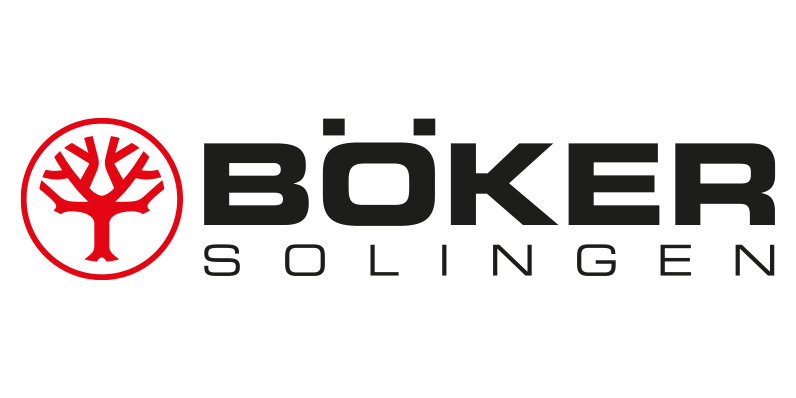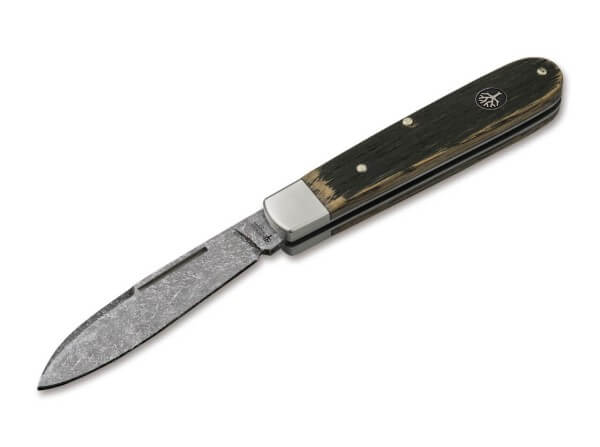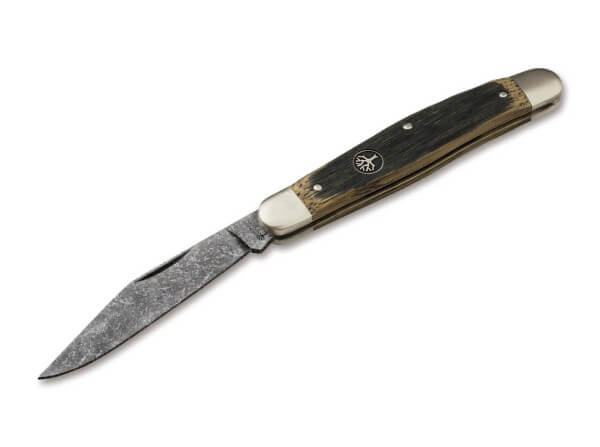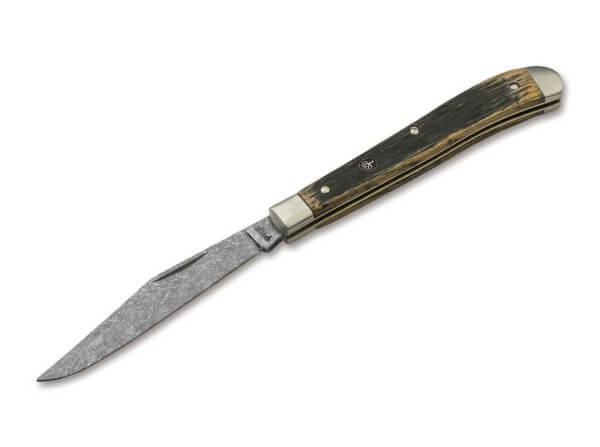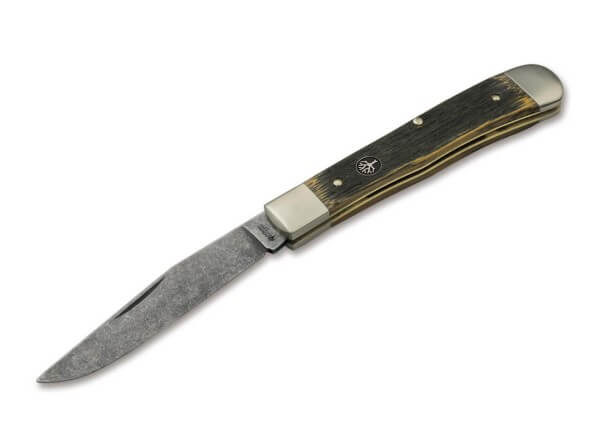Near the headquarters of Boker Manufactory in Solingen lies Castle Burg. This medieval fortress is a famous landmark of the Bergisches Land and was the ancestral seat of the Counts von Berg, who gave our region its name. It is also one of the biggest castles in western Germany and the largest reconstructed castle complex in North Rhine-Westphalia. Today, Burg Castle is used for a variety of cultural purposes, including as a museum, event venue and memorial.
RECOVERY
The handle wood of these special models is made from historic oak beams from the keep, the 32-meters-tall main tower of Burg Castle. In the course of the restoration and energy modernization project with a budget of 30 million euros, these oak beams were exposed and replaced at Burg Castle. Thanks to our close relationship with the castle preservation association, Schlossbauverein Burg a.d. Wupper e.V., we were able to obtain a small amount of wood from the 100-year-old oak beams of this historic monument. These new special limited-edition models are a reminiscence of our local history to which we owe our craft.
STAMPING/LASER CUTTING
The exact blade shape is created from O1 carbon steel with excellent edge retention by means of a laser cutter. Thanks to its superior characteristics and excellent edge retention, this material is perfect for premium pocketknives. The brass liners (tang), brass spacers and back springs are stamped with traditional methods and in-house stamping machines. Depending on the model, each knife has two or four bolsters, which are carefully embossed just like the small symbols and the nail nick on the blades. In addition, each blade is marked with the words „Boker Solingen Germany“. The four bolsters are then stamped from the slug, separated and deburred.
HARDENING
Before they are ground, the blades are brought to their final hardness of 60 to 61 HRC. For several minutes, the carbon steel blades are kept at approx. 870°C before being quenched in an oil bath. To prevent the brittle blades from shattering during everyday use, they are subjected to a process called annealing. At approx. 150°C, they are adjusted to the final hardness of 60 to 61 HRC. GRINDING Here the blade receives its long tapering grind from spine to edge. The hardened blade slugs are placed by hand on the device specifically adjusted to the blade type. The pieces must be very carefully cooled, since the blade might warp when heated or even lose some of their hardness.
GLAZING
Sitting at the grinding bench, our experts carefully check each ground blade and touch it up if necessary to ensure that the finished knife will always offer its proper mechanical conditions.
ETCHING
The knives of this series have a special, easily recognizable blade finish. It is a visual highlight and, more importantly, it protects the non-stainless blade from harmful environmental conditions. Each blade is manually dipped into an acid bath.
TUMBLING
After applying the dark etched layer, the blades are textured with even micro scratches by means of tumbling. In this process, the blades are placed into a tumbler drum with a variety of rocks and „washed“ together. The rocks rub and bump into the blade, creating the desired texture and making the blade more resistant against scratches and traces of wear and tear.
SCALES
The next step is crafting the historic handle scales. The solid oak beams are one-of-a-kind, hand-tooled in times long gone by. Due to the length variations and countless holes and cutouts for connection pins and wooden nails, processing the handles takes a lot of experience and attention to detail in order to minimize cutoffs and preserve the limited material. First, the wood is cut on a bench saw before they are further processed by hand. In the next step, the squared pieces are turned into delicate wooden scales (approx. 3.5 mm thick) on a table saw. Using a hand-operated miller/grinder, the rough contours of the scales are shaped.
PRE-MOUNTING
Here, two handle scales are riveted to a tang. The nickel silver bolsters are spot-welded to the liners. To hold all components together for further processing, the holes for the guiding pins are drilled.
MOUNTING
The scales, blades and all other components are put together using nickel silver guiding pins and then pressed. Although the knives are only missing their black tree emblem at this point, the limited collectors‘ items have little in common with the sleek finished product.
FINE GRINDING
This is where the component piece with its protruding rivets, burred edges and oversized handle scales is transformed into a perfectly polished jewel that will light up the eyes of every knife fan. Each pocketknife is finished to perfection on four grinding belts with different grains and speeds, a felt polisher and linen cloth.
STROPPING
Now the knife has its final shape and contours – but the blade isn‘t sharp yet. The blade of each piece is opened and hand-stropped on a grinding bench at a 30-degree angle.
FINAL INSPECTION
Here, the Boker emblem is placed in the prepared blind hole. Each individual knife is carefully cleaned on traditional wooden grading boards and checked for flawless function. Even the smallest flaws are corrected in order to send only absolutely perfect products to Product Packaging. The long journey of the historic Schloss Burg series through our manufactory comes to an end when the knives are sent to our main warehouse. Here, each sold knife begins a new journey to become a reliable tool for its proud owner. All knife styles come in a strictly limited edition of 1133 pieces (the year the construction of the castle was finished).








